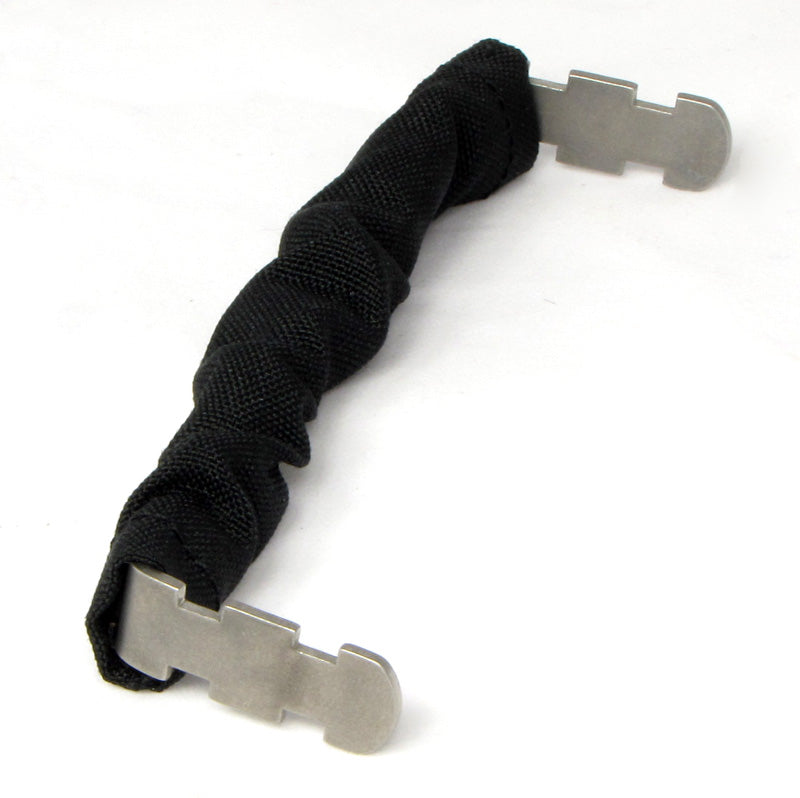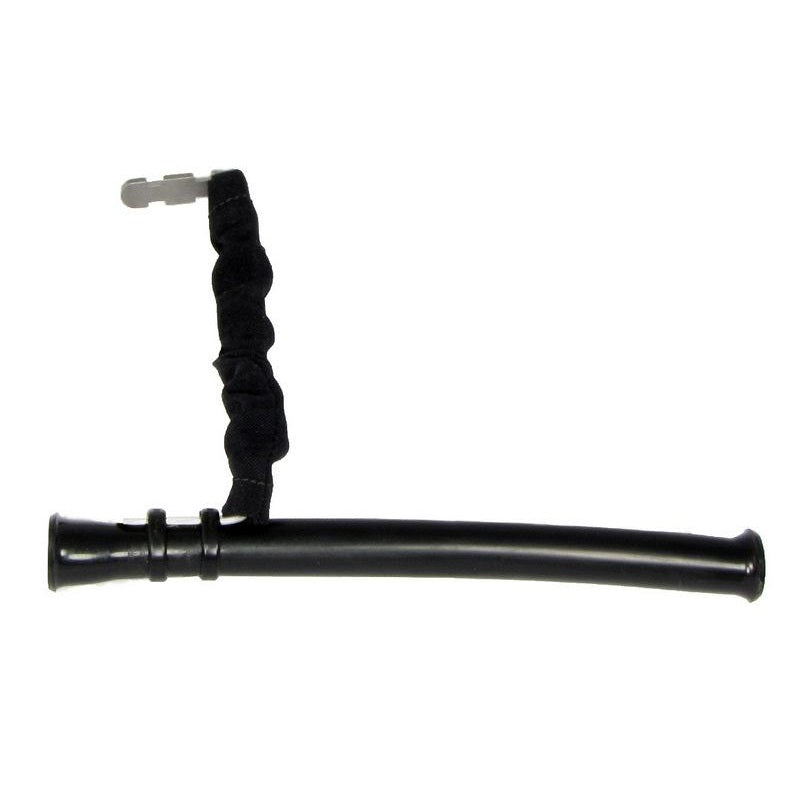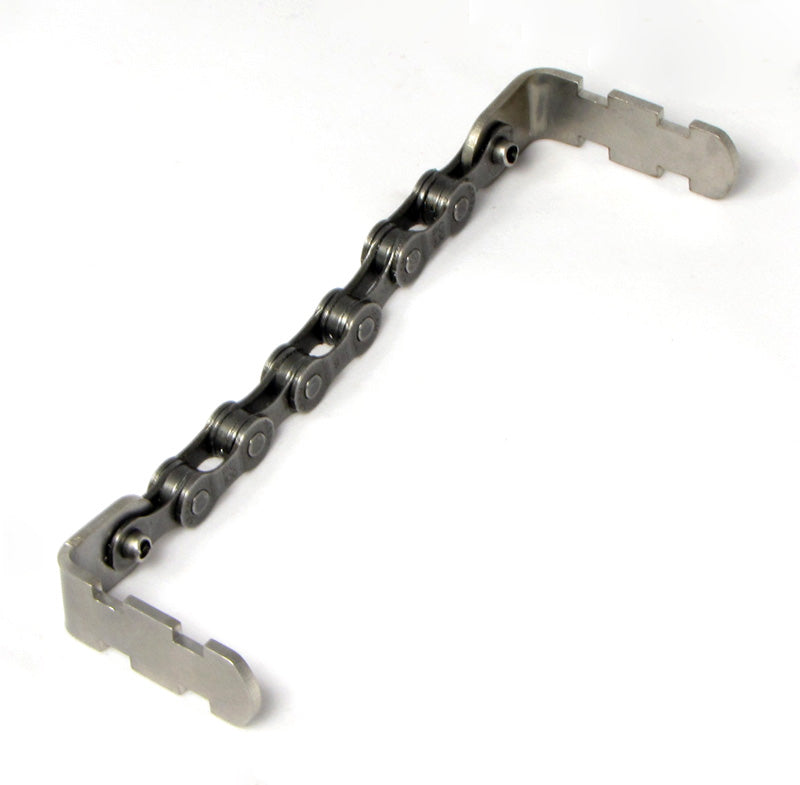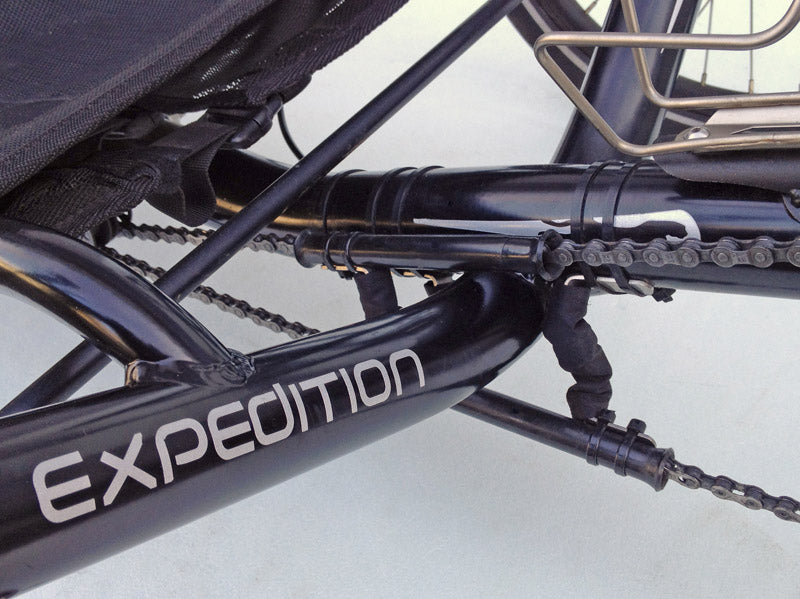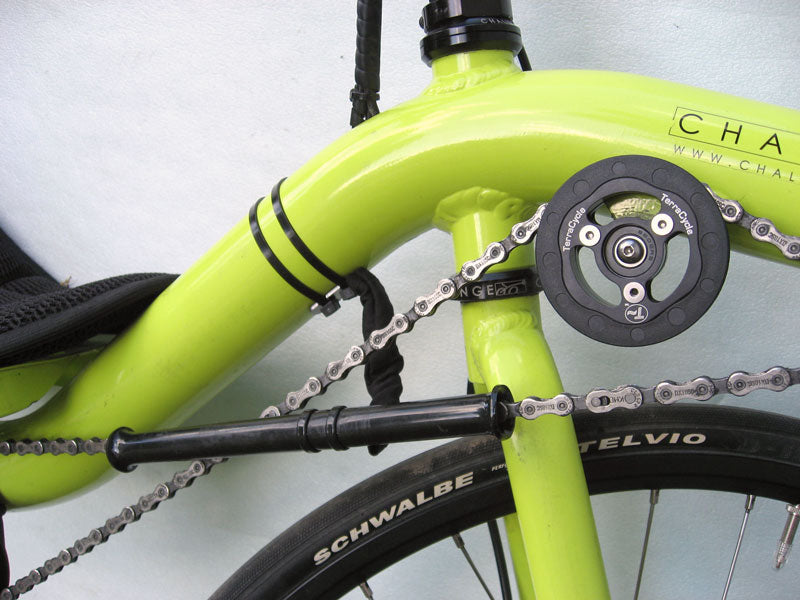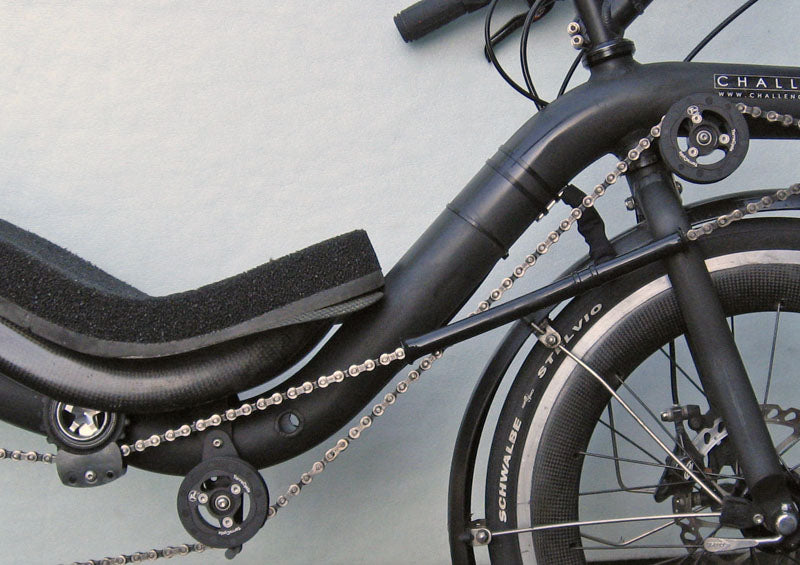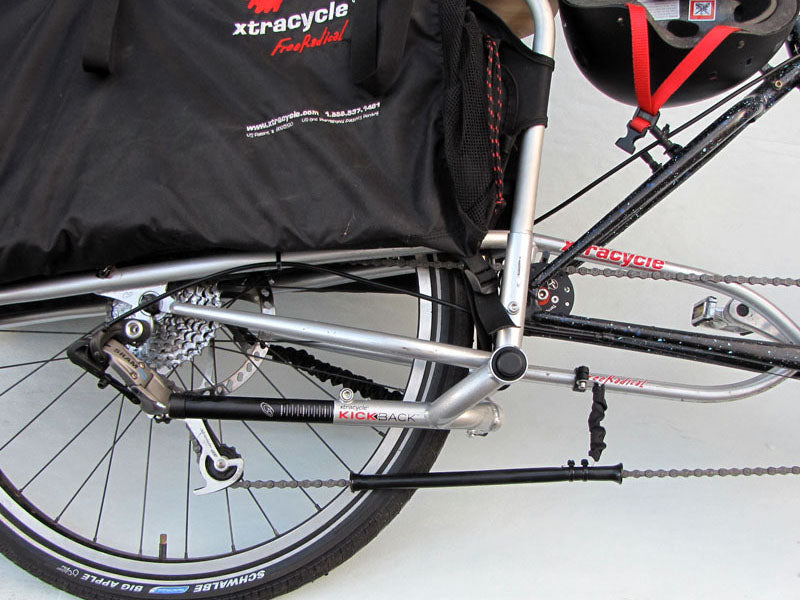Floating Chaintube Holder
Floating Chaintube Holder
SKU:CHM136.1
Couldn't load pickup availability
The Floating Chaintube Holder solves a lot of problems that come alongside the joys of chaintube ownership. Have chaintube noise problems? Have chaintube drag problems? Have chaintube mounting problems? Well, the diabolically simple and sturdy Floating Chaintube Holder laughs in the face of problems like these. Add in one of our special low noise, extra slippery, virtually indestructible plastic T-Cycle chaintubes and you'll never worry about your chain again!
FAQ
1. What exactly is this thing?
It's a way to hold a chaintube in place on a chain, in a way that lets the chaintube float up, down, and sideways with the chain while staying in position front to back. The idea is that the chaintube only rides lightly on the chain, covering the chain where it needs to be covered, and keeping the chain from going crazy without dragging on it in normal operations.
2. OK, I get it, but how does it work?
As it turns out, the heart of the mount is diabolically simple—it's a section of bicycle chain, turned sideways. Really. After looking high and low for all sorts of industrial materials to accomplish this action, we came back to bike chain. It worked the best of all, but it needed something to make it prettier and keep it from touching things it shouldn't. So we hid it away and protected it from rubbing on anything with a nylon packcloth sleeve. What makes it all work is the laser cut stainless L brackets attached to each end. One attaches to your bike, and the other attaches to the chaintube. Both ends attach with a pair of zipties for easy, secure, and versatile installation.
3. Tell me more about mounting. For instance, where do I put it?
The first consideration is where the chaintube needs to be. Generally, that's where the chain goes close to your fork, or the crossarm of your trike, or some other part of your frame. Where the mount goes depends on what is within the reach of the flexible chain assembly. It has a reach of 4.5 inches (11.4cm), so there are probably lots of places it will work. The chaintube can be attached anywhere along it's length (front, back, middle, etc.). If the place on the frame where you are attaching the mount is at a very different angle than the chain, the L brackets are designed to be adjusted by bending to get the matching angle. There are notches in the stainless L brackets to catch the zipties so everything stays secure. We put foam cushioning tape on the frame side L bracket to protect your paint.
4. Can I use any chain tube, like the tube I already have?
Yes. We recommend using a low noise, soft, slippery plastic. The material we use is quiet, slippery, and very abrasion resistant. Flaring the ends helps with noise quite a bit.
5. It seems crazy that such a simple thing could be the solution to my noisy chaintubes!
I know, right?! There are some other things you don't want to overlook, like the type of material the chaintube is made out of, and keeping the tube as short as you reasonably can, but yes, this is often the key missing piece to finally making your chaintubes quiet.
INSTALLATION INSTRUCTIONS
- As you approach figuring out how best to mount this, the first thing to think about is where the chaintube really needs to be. Where does the chain rub, or want to rub? Usually, that's where the chain goes close to your fork, or the crossarm of your trike, or some other part of your frame. We recommend keeping chaintubes short, between 4 and 12 inches (10 to 30cm).
- Where the mount goes depends on what is within the reach of the mount. It has a reach of 4.5 inches (11.4cm), so there are probably lots of places it will work. Pick one that leaves a bit of range even at the maximum extent of where the chain normally needs to go. The chaintube itself can be attached anywhere along it's length (front, back, middle, etc.).
- If the place on the frame where you are attaching the mount is at a very different angle than the chain, the L brackets are designed to be adjusted by bending to get the matching angle. The floating action works best if the chain inside the nylon sleeve on the mount is relaxed and perpendicular to the drivetrain chain.
- There are notches in the stainless L brackets to catch the zipties. Usually, it's easiest to wrap the zipties around the tube and tighten them only enough so there is a good amount of slack. You can then slide them over the L brackets, get everything approximately positioned, and tighten them loosely. once everything is basically in place, you can fine tune things before tightening things fully and trimming off the excess. We put foam cushioning tape on the frame side L bracket to protect your paint and give extra grip.
ADDITIONAL INFO
- Chaintubes have a reputation for being noisy, draggy, and prone to filling with chain crud. While this can be true, it doesn't have to be. We think that it's possible to have a chaintube that is very quiet, almost friction free, and unlikely to get gunked up. Here's how to do it:
- 1. Let the chaintube float with the chain. You want the chaintube to cover the chain, not tell it where to go.
- 2. Use the right chaintube material. We use a special low noise, extra slippery plastic.
- 3. Keep the chaintube as short as possible. The longer the tube, the more it will gunk up and the more the chain can vibrate inside. Shorter is better, down to about 75mm (3in).
- 4. Flare the ends. The entry end is most important, of course, but the exit end makes a big difference too. We flare both ends with a special process that thickens the ends and shapes them for smooth chain flow.
- If you do not have chaintube already we can supply lengths up to 4 feet (120cm) long in 4 inch (10cm) increments. We can optionally flare both ends with our special heat process.
- Since the inside of the mount is a section of bicycle chain, it is possible to shorten or extend it if you need to. We buy recycled chain from Resource Revival, so the particular brand and type of chain inside may vary.
- Trikes like the Catrike may require one or two floating chaintube holders, depending on the position of your boom and the sizes of your chainrings. Basically, it depends on the proximity of the chain to the crossarm and how much the chain is likely to bounce up and down.
- The stainless steel L brackets are attached to the section of chain with stainless steel pop rivets. They are very securely attached, but it is theoretically possible to remove them if you wanted to put in another piece of chain.
- This mount was designed to be very versatile and it's possible to attach it to nearly any bike or trike, recumbent or upright.
- If you have an Xtracycle, for instance, it is a great way to control the bottom chain and keep it from flopping on the ground or rubbing your kickstand.
